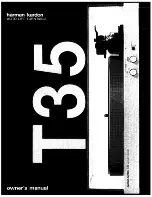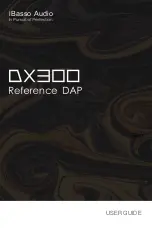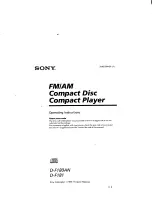
5
Microgroove records are exactly what they are
named – microgroove.
The ever so tiny mechanical modulations in the
groove’s wall are really small.
When a phono front end shall be „optimized“, it
all starts here in the groove of the record.
Any cartridge’s stylus should track the groove
with as little error as possible.
The UNI-Protractor was designed to ensure
exactly that.
Now what then is so difficult in setting the
„record straight“ - i.e. aligning the cartridge’s
stylus and the tonearm to do its job ?
The difficulty lies in the dimensions.
We are entering the first microcosmos here and
reach the boundaries of human visibility.
Smallest errors – hardly noticeable to the mere
eye – have huge impacts here.
A good phono front end shall produce clear
sound, reveal the most tiny detail in a recorded
performance and by doing so can create a
fascinating sonic and emotional experience.
Tracking distortions, blurred dynamics,
aggressive yet thin highs and a constrained
soundstage do not add positive to that experience.
But it is not that much about huge and
immediately apparent sonic dissonances resulting
from set-up faults .
It is about getting the very best possible from a
given cartridge/tonearm combination.
To get that, the best possible geometrical set-up
and alignment is the very first step.
What is lost here to imperfect alignment can’t be
recovered anywhere else in the audio chain.
I want to illustrate the point by adapting the
dimensions to our every-day world.
A modern stylus does feature a polished area –
and it is actually that area alone which should
Gulliver’s journey - the microcosmos in
cartridge set-up
have contact to the groove’s wall – of 1-2 µm to
5-6 µm.
A 12“ tonearm is approximately 300 mm effective
length.
Now what if we have an error of say one tiny
0.5 mm away from the calculated point of zero
tangential error? No big deal and well within the
tolerances of many alignment templates.
Most „sweet spots“ on templates are already
double that figure in diameter.
Now let me transform those dimensions to our
scale.
We amplify every figure in the tonearm and stylus
by 1000x.
Now the tonearm is 300 meter long.
The cartridge now has the size of a big family
house.
And the polished area of the cartridge ?
It is now 1-2 mm to 5-6 mm.
And hanging at the tip of a 300 meter long
tonearm.........
That 0.5 mm error we were talking about is now
50 cm - or ½ meter - off the perfect line.
In analog phono reproduction great expenses are
made to get perfect sound. Starting with the most
precise and correct possible alignment – a pure
mechanical issue – seems not only advisable, but
vital for true high-end sonic performance.
The UNI-Protractor was designed to ensure the
most precise alignment of any given tonearm.






































